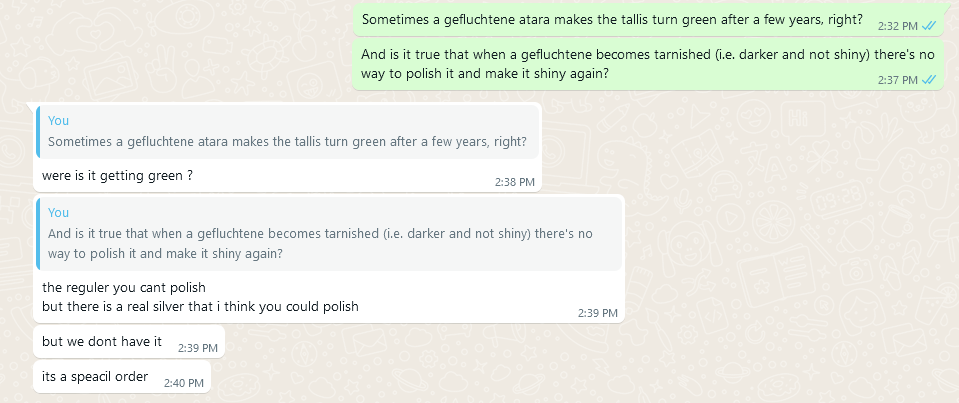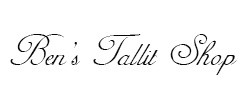Today a prospective customer asked a very candid question, and I gave him a very candid answer. Maybe too candid.
Basically he was concerned that our gefluchtene atarot were priced too low.
Thank you for the quick response. I have a interesting question for you. I'm trying to understand the price difference between your product and what is in the States. Basically you are at least 1/2 price. Are the specs the same (silver thread etc.)?
Half the price is a bit of an exaggeration, but in any case, I decided to write a detailed, plain-spoken reply.
"In general, our prices tend to be lower than the US vendors," I explained. "They probably offer very inexpensive or free shipping (to keep up with Amazon, et al) so the prices will be padded slightly to cover shipping costs. Also, my business is in a basement office, which I own, so our overhead costs are quite low. Besides our tzitzit tie-ers, it's just me, one full-time employee, one guy who works two hours a day, my wife doing the sewing work and my daughter helping out with the invoicing. So that type of small-staff setup also enables us to keep our prices low.
"Could be that US sellers have import costs they have to absorb. Presumably their labor costs are higher. And I think our pricing strategy may be a bit unusual. We basically keep all of our pricing parallel to our costs. I think a lot of sellers will pad their profit margin and then offer all sorts of discounts as a marketing strategy. It would probably improve our sales if we did that, and we are starting to dabble in that sort of thing, but for the most part, it doesn't really go with our branding, our vision -- or my personality.
"Also, because we're in Israel, we probably have access to more suppliers, so we're better positioned to find good wholesale prices. The US sellers might be limited to the larger wholesalers that have the ability to work with US retailers."
As a side note, here's a quick tip for gefluchtene atara buyers: Often the price is slightly higher if the atara is wider (more labor, more material), so keep that in mind when comparing prices. Also note that even the narrower gefluchtene is wider than a standard white atara.
As for a clear idea of the materials, that has always left me a bit stumped, but I'm 90% sure that the vast majority of gefluchtene manufacturers use very similar material, namely the same type of silver-plated thread.
For years I've tried to understand the gefluchtene atara. On several occasions I've asked chassidic suppliers, who should know more about the gefluchtene than I do, but I've never been sure what the threads are made of. We've purchased gefluchtenes from at least a half dozen suppliers, and they all look about the same to me and the wholesale pricing is almost identical, which leads me to believe that all of the manufacturers are using the same type of thread.
My guess is that the thread is silver plate. In shul, I've seen older gefluchtene atarot that look really tarnished, and have always wondered how you get the luster back.
When I searched for "genuine silver embroidery thread" I came across results like this and this.
A few days ago, a customer reported that he'd seen gefluchtenes that cause green marks on the tallit over time. I've never seen it myself, but I asked our supplier about that. It sounds like he hasn't encountered that much either. Here's what he said (his English is not so polished, no pun intended):

 United States Dollar
United States Dollar
 Shekel
Shekel
 Euro
Euro
 British Pound
British Pound
 Australian Dollar
Australian Dollar
 New Zealand Dollar
New Zealand Dollar
 Canadian Dollar
Canadian Dollar
